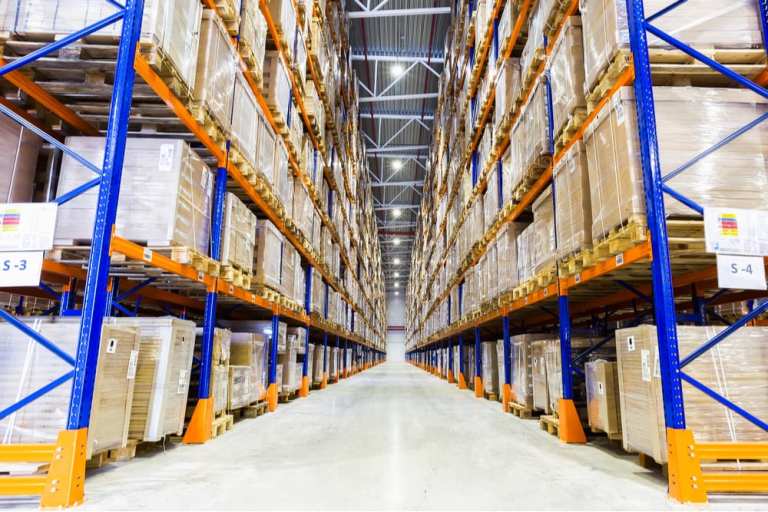Consumer behavior is changing — and the warehouse and supply chains that get goods into consumers’ hands (or on their doorsteps) must change, too.
To that end, as Scott Gravelle, CEO of Attabotics, told PYMNTS, robots can help make digital commerce a lot more efficient.
The company, based in Calgary, leverages a “3D storage” holistic view that deploys robots (wheeled shuttles, to be exact) to bring goods to workers as they pack and ship orders across a range of commerce sectors including food and retail. Earlier this month, Attabotics said it has raised $50 million in a Series C round led by the Ontario Teachers’ Pension Plan Board.
In the bid to help transform supply chains overall and warehousing in particular, Attabotics’ robots locate and deliver goods to workers readying for the last mile through warehouses that are vertical, not horizontal.
In the process, the retailer or business that embraces the Attabotics model can reduce its warehouse footprint significantly, shaving it by 85 percent. The ripple effect is one that benefits end consumers as delivery times are reduced.
As Gravelle told PYMNTS, the shift toward automating part of the picking and packing process and consolidating the actual fulfillment center has been in place since well before the pandemic. The coronavirus has only accelerated the transition.
Advertisement: Scroll to Continue
“All of the supply chains that existed were evolved from supporting bricks and mortar retail distribution,” he noted.
The Amazon effect has trained a spotlight on some pain points. Consumer expectations have changed, he said, primarily when it comes to delivery. In short, we expect to get what we order in two days — or even the next day.
Retailers, of course, have scrambled to respond.
But as eCommerce has grown, the old supply chain model simply does not support profitability amid shortened delivery timeframes and last miles that are, compared to Amazon, at least, relatively long.
Consider, as Gravelle illustrated: Where once retailers used to get 36 T-shirts in a box to a brick-and-mortar location to arrange on shelves, now 36 shirts need to go into 36 separate boxes.
Said Gravelle: “If you’re losing money on eCommerce and the only part of your business is eCommerce, then it just means you are losing money faster.”
Across the six Attabotics locations in North America, vertically structured, and with the robotic shuttles moving across three dimensions to get items to packers and shippers, Gravelle said that the Attabotics model deploys inventory closer to the consumer base.
The Network Effect
It also supports micro-fulfillment activities and gives rise a beneficial network effect, he said.
Several retailers can take advantage of the model from a given location, improving their supply chains (and competitive position).
As Gravelle noted, only a few retailers have the reach and volume to build out their own end-to-end networks. And final mile delivery can account for 70 percent of transportation costs.
Big box and marquee name retailers, said Gravelle, “own their own real estate. They probably can do this by themselves,” he said of last mile efforts.
“But if a retailer is renting real estate in a traditional shopping mall, they have now aggregated together to share that infrastructure that they couldn’t support just by themselves,” he said.
A collection of retailers working together to build a streamlined distribution network can support same-day and next-day eCommerce efforts in a cost-effective manner, and even help the environment by cutting down on cardboard boxes.
On that last point, maintained Gravelle, because of the re-imagined infrastructure underpinned by robotics, “we don’t need packaging that protects the products from conveyor-based sorting equipment, like you’ll see in any large parcel post sortation facility. We are trying to holistically address the cost by creating an optimized network of technology.” Against this backdrop, if orders are aggregated for a certain timeframe for several retailers, one driver can deliver multiple orders.
One other ripple effect of a reinvented supply chain is that labor market concerns and public health concerns (through robots) can be addressed simultaneously. Warehouses no longer need to be located on turnpikes, and because they are designed for urban locations, they can bring jobs to the city.
Looking ahead, Gravelle said the company is working on locations for pilot systems for technology demonstrations of multi-tenancy and micro-fulfillment.
Of the shift to automated warehousing and more effective and efficient last mile transformations, Gravelle told PYMNTS that “we know the future’s coming because we can see it in consumer behavior.”

